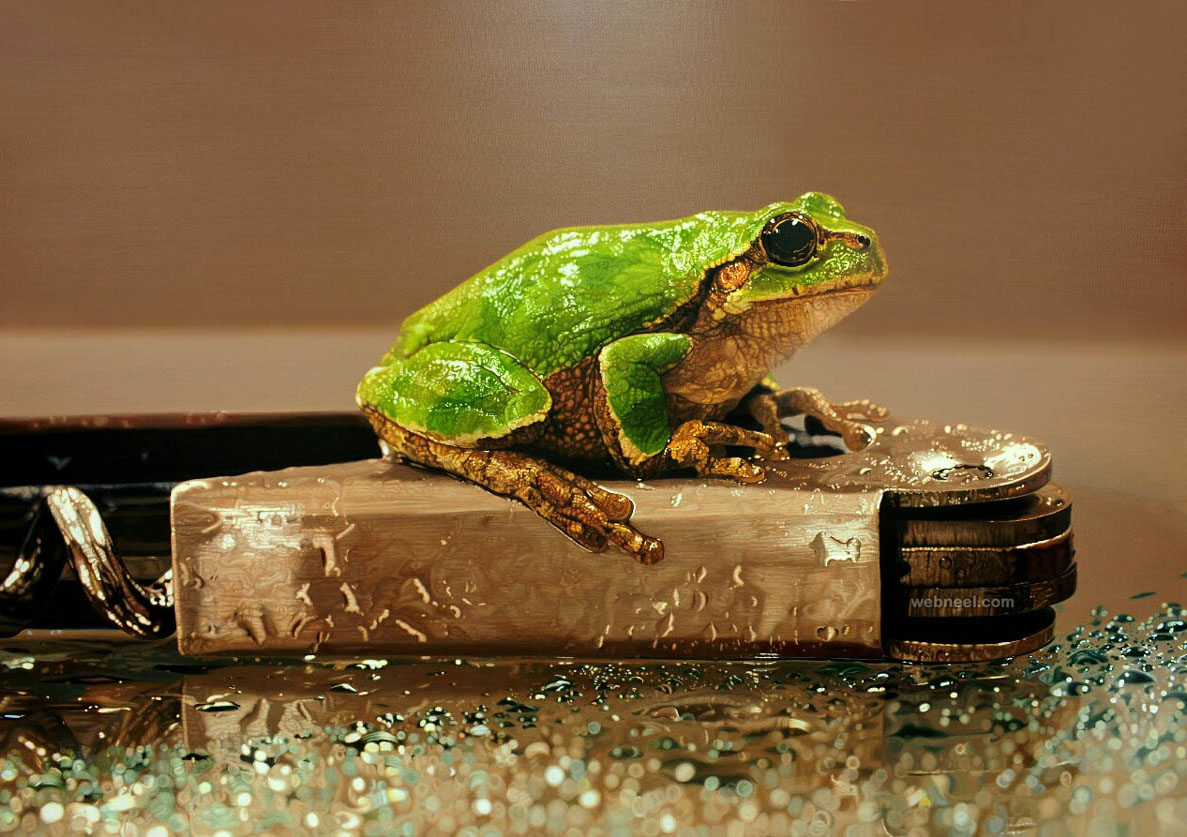
Introduction
Frog painting is a unique and fascinating art form that captures the beauty and charm of these amphibians on canvas. Artists around the world have been inspired by the vibrant colors, intricate patterns, and playful nature of frogs, resulting in stunning artworks that showcase their talent and creativity. In this article, we will explore the art of frog painting, its history, techniques, and the artists who have mastered this beautiful form of expression.

A Brief History of Frog Painting
The art of frog painting dates back centuries, with early examples found in ancient cave paintings and Egyptian hieroglyphics. Frogs have long been revered in many cultures around the world, symbolizing fertility, transformation, and good luck. In Chinese and Japanese art, frogs are often depicted as bringers of rain and prosperity.
However, it wasn't until the 19th century that frog painting gained popularity as a recognized form of art. The advent of modern painting techniques and the growing interest in natural history and scientific illustrations contributed to the rise of frog painting as a distinct genre.

Techniques in Frog Painting
Artists employ a variety of techniques to bring frogs to life on canvas. One popular technique is watercolor painting, which allows for the delicate blending of colors to create realistic and vibrant frog images. Acrylic painting is also commonly used, providing a more textured and bold representation of these creatures.
Another technique utilized in frog painting is the use of oil paints. Oil painting allows for greater depth and detail, capturing the texture of a frog's skin and the brilliance of its colors. Some artists even combine different techniques to achieve unique effects and add more dimension to their paintings.

Famous Frog Paintings and Artists
Over the years, several artists have gained recognition for their exceptional frog paintings. One of the most renowned artists in this genre is David Stribbling, whose hyper-realistic frog paintings have captivated art enthusiasts worldwide. His attention to detail and ability to capture the personality of each frog is truly remarkable.
Another notable artist is Chris Leeper, who combines traditional painting techniques with contemporary elements to create unique and thought-provoking frog artworks. His use of vibrant colors and abstract backgrounds adds a modern twist to this traditional art form.

The Symbolism of Frog Paintings
Beyond their aesthetic appeal, frog paintings often carry symbolic meanings. In many cultures, frogs are associated with transformation and rebirth. They symbolize the ability to adapt to different environments and undergo personal growth. Frog paintings can serve as a reminder of the importance of embracing change and finding beauty in transformation.
Furthermore, frog paintings can also represent harmony and balance. Frogs are often depicted in peaceful and serene settings, reminding viewers to find tranquility in nature and embrace the simple joys of life.

Conclusion
Frog painting is a captivating art form that showcases the beauty and symbolism of these unique creatures. From their vibrant colors to their intricate patterns, frogs have inspired artists for centuries. Whether created with watercolors, acrylics, or oils, frog paintings continue to delight art lovers around the world. Through their artwork, artists not only capture the likeness of frogs but also convey deeper meanings of transformation, rebirth, and harmony. Explore the world of frog painting and immerse yourself in the enchanting world of these fascinating amphibians.